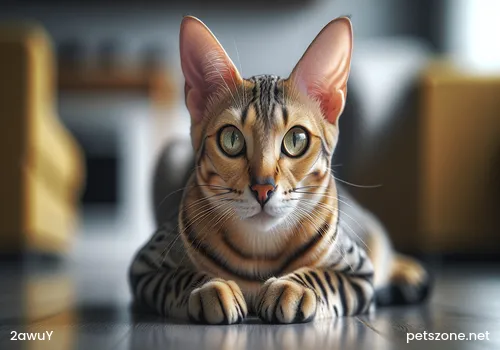If You Love Cats, Come Learn Cat Language

According to scientific research, cats can produce up to 30 different sounds. This is also evident in our daily life. Besides meowing, cats also make sounds like purring or hissing. This at least indicates one thing: cat vocalizations are not meaningless. It is a way cats attempt to communicate with humans. Therefore, to understand cats, it is time to consider the meanings behind their calls.
1. Meowing
Cats primarily meow to attract attention. If the meow is short and high-pitched, it means the cat is looking for its owner inside the house. If the meow is prolonged and loud, it indicates the cat wants to open a door or is hungry. When confined in a carrier or if its tail is stepped on, the cat will emit an angry loud cry.
2. Purring
Cats purr when they are happy or content, and the purr varies greatly among cats. We can easily distinguish purring from harsh growling sounds, which cats or dogs produce when defending against intrusion.
3. Cackle Sound
This sound is hard to imagine if not heard in person. Generally, when a cat is staring intently at birds or squirrels outside the window, it occasionally makes a continuous ka-ka-ka sound by repeatedly opening and closing its jaw, with a hint of anxiety in the tone.
4. Mew Sound
This pleasant tone is the most common sound cat owners hear. Generally, it indicates the cat wants you to do something for it.
5. Hissing
A short hiss is a typical threatening sound emitted when the cat feels fear, senses a threat, or before attacking. Different cats react differently after hissing; some may just scare off and run away, others may raise their paws to attack. Usually, this is accompanied by body language like flattened ears, lowered head and arched back, and puffed fur.
6. Low Growl and Howl
Angry and anxious cats produce these threatening sounds. Sometimes, when a companion cat leaves or disappears, cats with a close bond may make this sound. Female cats in heat also emit this type of call. The cat in heat sound is well known—giving goosebumps. Those planning to neuter should note it is necessary to wait until after the first heat. The cat in heat sound resembles a crying child, calling all night during spring and summer.
7. Constant Calling
There is always a reason when a cat keeps calling. Cat owners can first check food bowls and litter, then play with the cat to relieve stress. If these basic needs are met and the cat still calls nonstop, consider if it is due to discomfort. Observe the cat’s appetite and bathroom habits, and perform a full body check for any abnormality.
Besides physical discomfort, stress may be another cause for incessant calling. Think carefully if there have been any recent household changes, such as furniture rearrangement or changes in family members. Once the cause is found, the cat’s nonstop calling will naturally improve.
Additionally, the meaning of cat vocalizations is likely to be further explored. Experts at Lund University in Sweden recently launched a five-year research project to decode cat language and explore if cat sounds have dialects, hoping to compile a “Cat Language Dictionary” in the future. They believe cats may consciously change melody and tone to convey messages or to make the owner perceive the urgency of the message.
An interesting point is that the expert team will also study if cats from southern Lund and central Stockholm have different accents or even dialects. They have noticed slight differences in cat calls from different regions, and the research will reveal to what extent cats are influenced by the language or dialect spoken by their owners. In this regard, cat language may eventually become a major language group, so if you love cats, hurry up and learn cat language with your cat.



